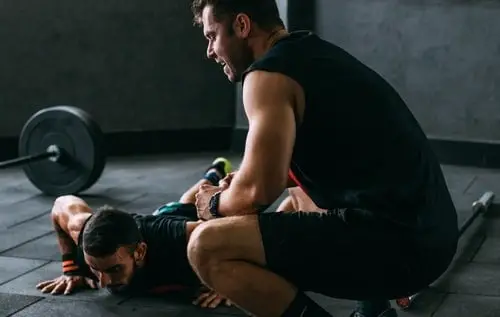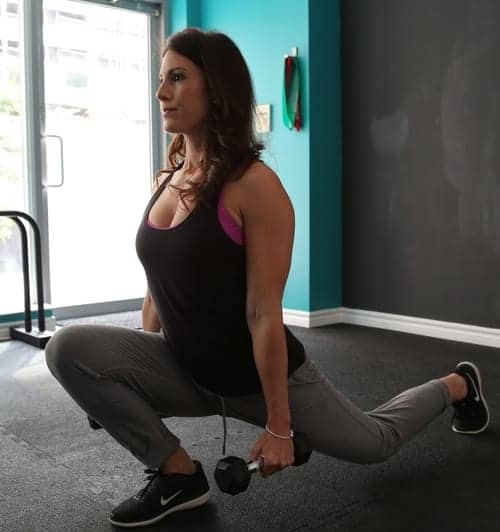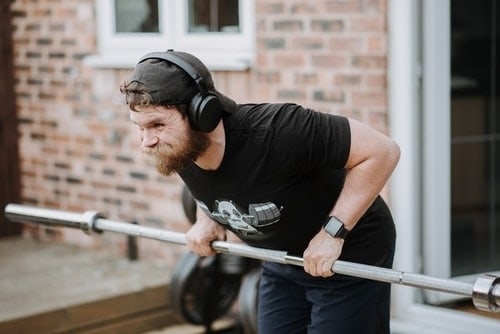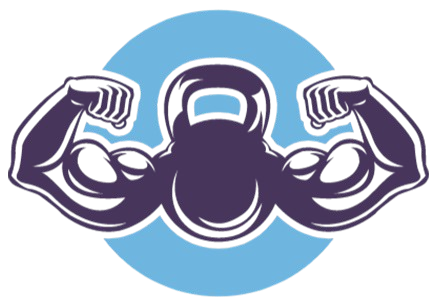Fitpro Income
The Personal Training Assessment That Gets Clients
I not only used personal training assessments to make sure I knew what exercises to prescribe my clients, but I actually made it my version of a wow session and gained a lot of clients by doing it.
In this article, I am going to be walking you through the exact personal training fitness assessment that I used to show prospective clients that I actually knew what I was talking about, and that I could not only help them get in shape, I could help with issues they may have had for years.
It’s simple, it gained me a lot of clients and it will do the same for you.
Sound good?
Let’s go….

A personal training assessment should consist of postural analysis, testing for muscle weaknesses or imbalances, endurance, strength, and injury identification. For a personal trainer to be able to prescribe exercise, they must have a full understanding of the client’s starting points.
For most trainers, the whole “personal trainer client assessment” is seen as unnecessary and inefficient use of time with a new client.
I can tell you that this is totally not the case. I paid such close attention to every movement my prospect made, that they could see they would not be getting a “cookie-cutter” type workout plan. They were going to get a totally customized workout plan just for them.
Trust me, the level of detail and commitment you are showing your prospect at such an early stage of your meeting does a lot of the selling for you.
Anything that makes selling easier is a good thing!
When I suggest what you should explain to your clients, you will see that my explanations are very simple and to the point.
This is exactly how you should be with your client. You may be really interested in their posture, but they probably aren’t, and they almost certainly won’t want to hear about the biomechanics behind it.
The truth is, postural issues are very common in city workers and cause a great deal of pain and injury, with lower back pain causing chronic pain for 1 in every 15 people in the UK.
For a little more depth of knowledge on the topic, I’ll add a link to a government article that explains just how widespread the issue is.
Low Back Pain: Early Management of Persistent Non-specific Low Back Pain
Keep it simple, explain the issue you have found and how you are going to fix it. Nothing more nothing less.
What should be included in a fitness assessment?

Standard fitness assessments will have you assess your clients in five areas: a health evaluation, body composition testing, cardio endurance, muscular strength & endurance, and flexibility testing. Testing each of these areas allows you to develop an appropriate and effective training program.
However, as you will see below, my assessments focus far more heavily on postural, movement, and push/pull analysis.
Why?
Because people looking to take on a trainer already know they aren’t fit, they know they get out of breath when they walk up a flight of stairs, they know they can’t do a pull-up and they know they can’t touch their toes, so after an hour of “testing”, what have they learned?
Everything they already know!
Instead, by evaluating things a little deeper, you can show your client a whole bunch of new issues they never even knew they had. You’ll see this when you ask someone to show you a lunge, their knee will bend drastically inwards and they will finish, smile at you, and wait for the next exercise, they have no idea what vagal collapse is and why it’s a problem.
By showing them the issues they have, you are demonstrating your expertise as a trainer and how your knowledge is far deeper than the superficial stuff that’s taught in most training courses.
Now, they might not understand everything you are telling them and that’s understandable, the point is, you are showing them that you really know your stuff and by hiring you they aren’t just hiring a trainer, they are hiring an expert.
Feel free of course to stick to the basic fitness assessments, they can be useful in certain circumstances, it’s just that I think you’ll find the ones I explain to be much more useful from a trainer’s point of view. They will allow you to create a far better program that will get your clients better results and result in fewer injuries.
Pretty important stuff!
So let’s get going with the actual assessments that I used to convert the majority of my complimentary sessions into paying clients.
1. Postural assessment

The results of your prospect’s postural analysis assessment should dictate a large amount of the training program that you prescribe for them.
I worked in the city of London, so the most common postural issue I came across was kyphosis, which is a rounding of the upper back. This is often caused by a hunched-over posture whilst working long hours at a desk.
I would recommend that before your session begins, you meet your prospect on the gym floor and ask them to stand facing away from you so that you can get a side profile view of them.
From here, you are looking for three conditions:
- Kyphosis
- Lordosis
- Scoliosis
Two of these conditions can be helped with corrective exercises and stretching routines.
Kyphosis
Rounding of the upper back muscles will give a hunched-over appearance with the shoulder blades typically wide apart at rest. The shoulders may also appear to be lifted towards the ears at rest.
What to explain to your prospect
If you notice that your prospect has the typical features of kyphosis, explain to them that as a result of working at a desk for long periods of time, their chest muscles have become overly tight. Explain that a routine of gentle stretching and working the opposing muscle groups will certainly help this condition.
Lordosis
Lordosis is characterized by a pelvis that is tilted forwards as a result of the hip flexor muscles pulling too tightly at the top of the iliac crest of the hip.
Lordosis creates a strong curve in the lower portion of the back when viewed from a side profile.
This is a very common postural issue for many city workers, as sitting for long periods of time tends to shorten the hip flexor muscles, which pull on the pelvis which in turn causes pain and discomfort in the lower back.
Many clients will suffer from this, so if you can accurately recognize and prescribe corrective exercises for it, you will bring a great deal of relief to many people.
What to explain to your prospect
All you need to say here is that due to sitting for long periods of time in the same position (typically a 45-degree angle) at a desk, the muscles on the front of their legs are pulling on muscles in their lower back, causing tension and pain.
The way this can be treated is with specific active and static stretching routines, that will bring great relief to any lower back issues.
Scoliosis
Scoliosis can typically be seen when a posterior view shows the lifting of one shoulder higher than the other at rest. It is seen as an s-shape curvature of the spine. It is usually caused by defects at birth or injury to the spine.
Scoliosis is very difficult to treat by way of exercise, so it is important to prescribe exercises that will not cause weight to go through one side of the body at a time. For example, dumbbell side bends are an absolute no-go for clients with scoliosis.
What to explain to your prospect
Unfortunately, treating scoliosis is very difficult through exercise prescription. Surgeries are usually required to fix or alleviate the issue. The good news is that a lot of people with the condition already know they have it.
By showing your prospect that you have noticed their condition and will be tailoring the programs to assist with their condition, and will not be advising any exercises that will cause discomfort or worsen the condition, you will gain their trust.
Movement pattern analysis

The purpose of the movement analysis is to ascertain if your prospect has any muscular imbalances that need to be addressed during the training sessions.
It is important to notice these imbalances, as some exercises could be more likely to cause injury or discomfort if they are not taken into consideration before adding any additional weight to an exercise.
Vagal collapse testing
A very simple test for vagal collapse is a simple forward lunge.
In order to see the knee’s reaction to bearing weight, you will want to position yourself directly in front of your prospect and get low to the ground.
Once you are in position, watch their knee as they enter the lowering portion of the lunge movement. Any weakness in the stabilizing muscles around the hip and knee region will be exposed by an inward collapsing of the knee.
For example, when the prospect brings their right leg forward and enters the lowering phase of the lunge movement, their knee may buckle towards the left side of their body. From a front angle, this will be very obvious.
It can be treated by increasing the strength of the stabilizing muscles of the hip region, by using slow, controlled movements under strict instruction.
For example, I would take two foam rollers and place them on either side of my client’s foot whilst they performed slow static lunges. Teaching my client to complete the movement without touching the rollers made them really think about the alignment of their knee.
What to explain to your prospect
Very simply explain that you have seen some slight muscular imbalances that are incredibly common. They are easily treated with some simple exercises that will help to not only increase the amount of weight they will be able to lift but also prevent injuries occurring as a result.
Glute testing
Overly tight glute (butt) muscles are again a staple of city workers.
A very simple test to see if a prospect has overly tight glute muscles is a squat test.
Have your client perform bodyweight squats with their feet shoulder-width apart. Ask them to lower themselves towards the ground as if they were sitting into a chair as deeply as they feel comfortable with.
Two of the main things you should be looking for here are:
- Toes outwardly turning during the lowering phase of the movement
- Heels becoming elevated during the lower portion of the squat
Overly tight glutes can be treated with stretching routines that make use of self-myofascial release using a tennis ball or foam roller, and static stretching from yoga poses such as the pigeon.
What to explain to your prospect
The knee and heel issues that were found are again very common and can be easily helped with some gentle stretching that can be taught by yourself to the prospect that they can do at home or whilst in the gym.
Push movement testing

Imbalances of the upper body are seen when conducting either a push or pull movement. To see imbalances of the front of the body (anterior chain), you can watch your prospect perform a simple press movement, for example, the bench press with an unloaded bar.
During the lowering (eccentric) and lifting (concentric) phases of the movement, look to see if one side appears overly dominant.
During the movement, move behind the prospect to look downwards of their body. You should get a clear angle of their shoulders from this angle. Look to see if one shoulder tends to rise from the bench during any portion of the movement. If so, this could be a sign of dominance on one side.
What to explain to your prospect
If you notice any dominance on one side of the body, explain that you would plan to work on the weaker side of the body to increase the overall performance of the movement. This would decrease the chances of injury during training sessions, increase their overall strength and reduce the likelihood of any further postural issues occurring.
Pull movement testing

My favorite pull movement to assess a prospect was a seated row exercise.
I would have the prospect get comfortable on the seated cable row machine with a v-grip attachment. I would then load a small amount of weight to the stack, and ask them after they were in the correct position to begin slowly draw their arms in towards their body and return to the starting point.
During the movement, you are looking for any signs of dominance on one side. You may see a shoulder rise on one side, which could indicate a muscular imbalance.
What to explain to your prospect
The explanation would be almost exactly the same as with the push test.
Explain that you have found some imbalances that may hold back the prospect’s progression and lead to postural issues if not treated correctly.
Explain that you will be doing some single side dominate exercises to correct the issue which will increase their overall strength and speed of their training progression.
How will these tests get you, clients?
So, I know that on the face of it, this doesn’t look like the typical “WOW” session you were taught to give in during your personal training course.
You may think it sounds too slow and can’t be exciting enough to get you, clients.
The good news is, that it absolutely can!
Once I did away with the silly “Look how hard I make this person sweat” style of the complimentary session and swapped it for a detailed assessment session, I got a lot more clients.
I actually ended up converting just under double the number of prospects by using assessments. I used to keep statistics of my conversions because I’m a geek, but it’s also a good practice to see if what you are doing is working.
Is it the most comprehensive fitness assessment? No, does it need to be? No. This is by no means an exhaustive list of assessments, so feel free to add your own, but just don’t make it too complicated or long.
These assessments are enough to get a good understanding of your prospect, demonstrate your expertise and last roughly thirty to forty minutes, which gives you plenty of time to dive into your sales pitch at the end.
By taking the time to properly assess a prospect, you are showing that you are not like the vast majority of trainers that are fresh out of their training courses.
You are taking the time to make sure that the exercises you prescribe for them are not only going to help them reach their fitness goals but will also prevent further issues and they will be far less likely to suffer from any injuries during training sessions.
By conducting these assessments, you are showing your prospect that you are not simply training them in order to get money from them. You are doing your best to ensure that they get the most out of their sessions and more importantly, you have their safety and comfort in mind at all times.
Your prospect will quickly start to trust you after seeing you have their best interests in mind, and trust is an excellent way to ensure sales.
People like people they trust, and they buy from people they like!
How do you use the information from the assessments?

At the end of the session, your prospect may be surprised to see that they haven’t broken a sweat, they aren’t sore and they aren’t out of breath.
You should address this concern, and explain that a lot of personal trainers would go through the standard “wow” session by trying to destroy people to impress them.
State that you have seen people be injured during sessions, and it is usually because the client was not ready for the additional weight to be added to an exercise, or they had a muscular issue that was not noticed by the trainer. When you add additional weight to an unstable muscle, injuries are inevitable.
Explain that the reason you perform the tests before you train anyone is that this is the fastest and most efficient way to help your clients reach their goals.
You know exactly where your clients are starting from, so you can address and correct any issues, which means progress is fast and injuries do not occur.
Client goals
Explain that all your prospect’s goals will be taken into account and that this was certainly not a typical session.
The results of that day’s session will allow you as their trainer to write up an appropriate training program that will start upon them taking up sessions with you.
Conclusion
Using personal training assessment sessions was a fantastic way of me getting to know exactly where my clients starting points were.
I knew exactly what I could and couldn’t do with them, which prevented any awkward situations, such as a client telling me they couldn’t perform half of the program I had written for them due to knee or back pain, etc.
Will this method get you 100% conversions on your complimentary sessions?
Absolutely not!
Nothing will convert 100% of your sessions, but it will convert a large number of them. It also sets you apart from other trainers and shows that you can be far more professional than most. People like this and they will be more likely to buy from you.
Go give it a try for your next complimentary session, I think you will be surprised by the results.
Go get ’em!
